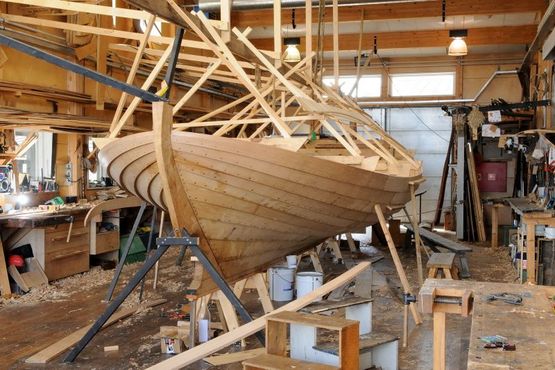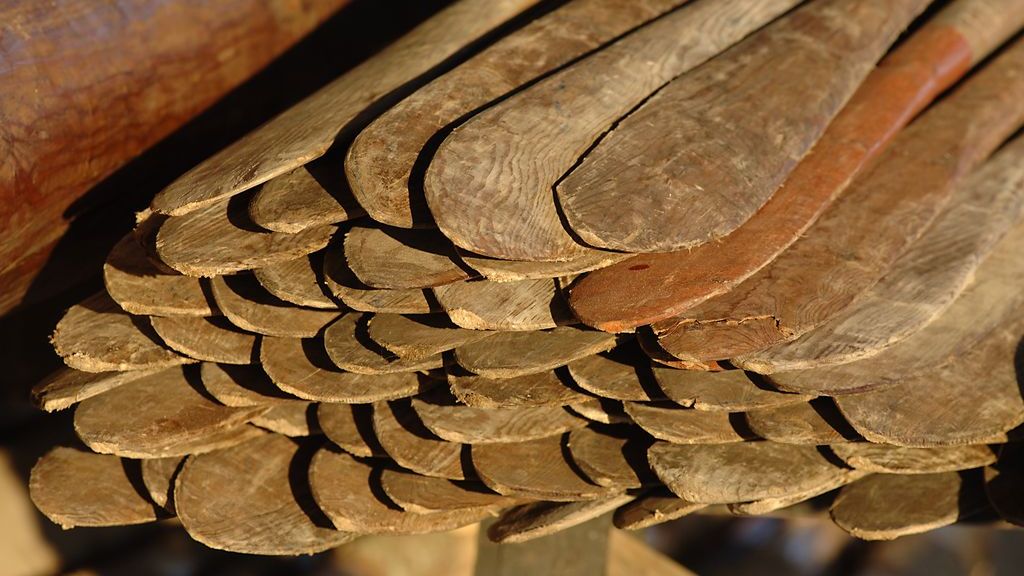Since the spring, the museum’s guests have enthusiastically followed the construction of the eel drifter, a fishing boat that was common in Danish waters 100 years ago. The boat was ordered from a private client and is a unique opportunity for the boatyard to maintain a boat-building tradition that is slowly dying out.
"Three of the boatyard’s boatbuilders and an apprentice are engaged in the construction and when the museum’s guests look in on the boatyard, they witness a craftsmanship that is no longer practiced at many other locations in the country” explains the head of the boatyard, Søren Nielsen. ”And even though clinker-built boats are still constructed at some of the country’s boatyards, there are only a few places where the public can observe from up close”.
At the beginning of the 1900’s, the eel drifter was a very effective fishing boat which practically emptied the internal waters of eels. The boat is characterised by very large rigging (many large sails, Ed.), but it is extremely seaworthy and the eel drifters of the past often raced against each other.
There are already two eel drifters in the museum harbour: 'Dan', which is privately owned, and 'Viktoria' which is owned by the Viking Ship Museum. Both boats appear as they did when they were built in 1906 and 1904 respectively by Christian Nielsen at Fejø Boatyard.
”Clinker-built wooden boats are still built in Denmark, though to a very limited extent. But the only way to continue to be a skilled boat-builder is to build many boats. It is impossible to learn the craft of boatbuilding from books. It can only be acquired by building many boats. The construction of the eel drifter is a fantastic opportunity for us to preserve the craft and to highlight one of many examples of a traditional boat-builder who designed a boat around the end of the 19th century, based on the experiences of earlier generations and from the new demands posed by the fishermen” concludes Søren Nielsen.
Visitors can follow the process at the boatyard; they can talk with the boat-builders and see the exhibition about the old eel drifters. It is also possible to follow the building work in words and pictures on the homepage.
Facts
The term smack is used to describe a boat with a built-in basin or well. A well is a space in the boat where, due to a large number of holes in the bottom of the boat, there is always fresh seawater where the fish can be kept alive until they are sold on land.
The eel drifters were about 26-28 feet (approx. 8.5 metres) long. They had a centreboard in the centre of the boat that could be pulled up or pushed down, depending on whether the boat should sail or drift with seine nets.
The new boat will have an onboard motor, but will otherwise be built and arranged like the old smacks. The boat will be used as a pleasure boat.



